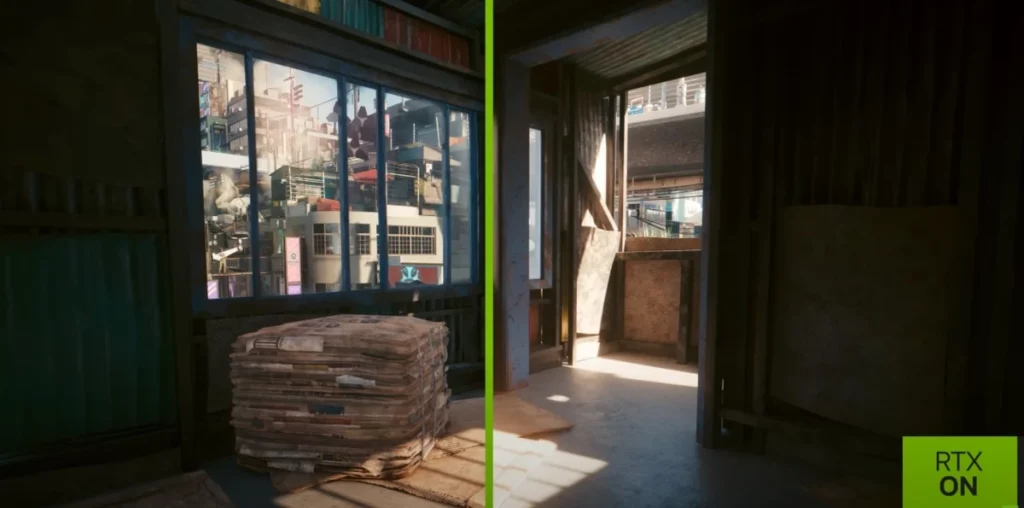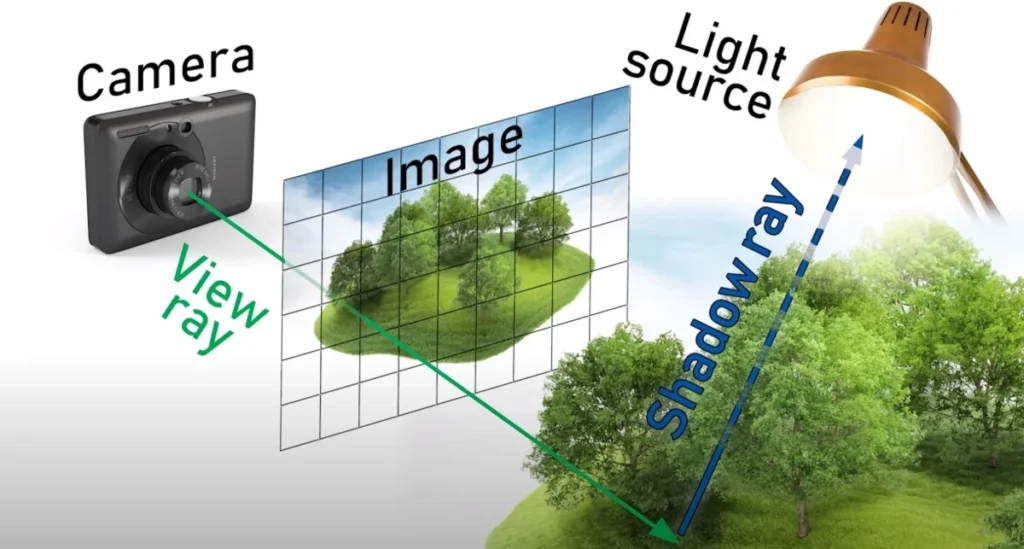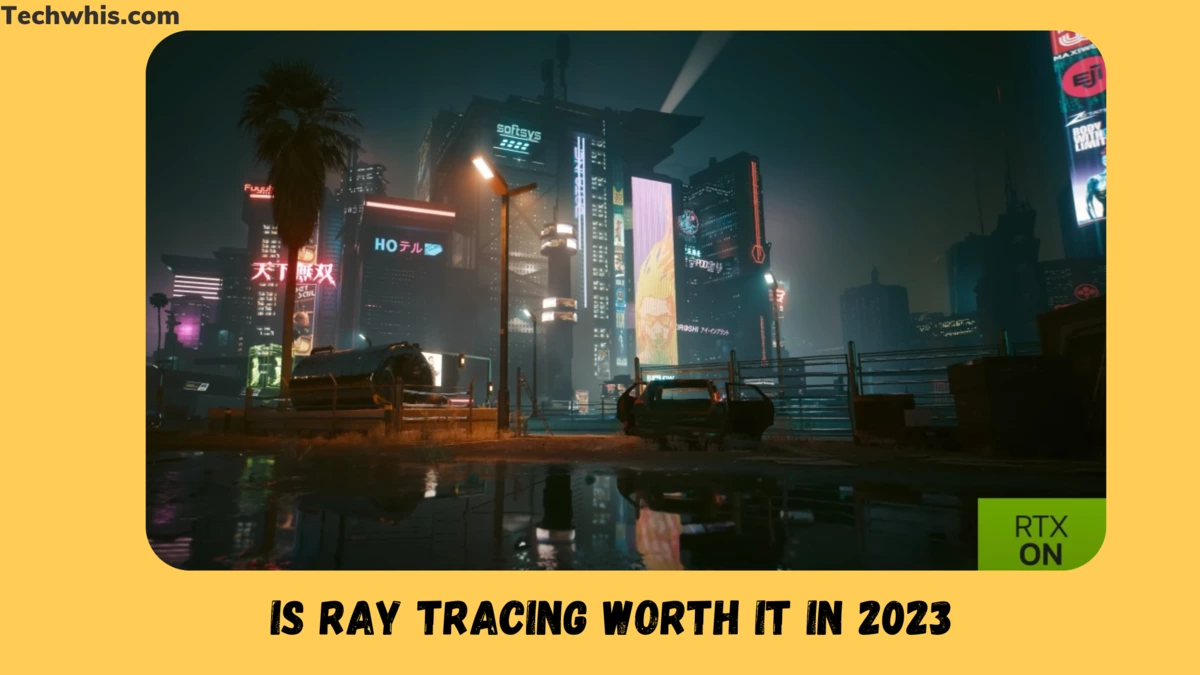If you’re a gamer or a developer, you’ve probably heard of ray tracing. Ray tracing is a rendering technique that simulates the behaviour of light in a virtual environment. It’s been around for a while, but it’s only recently become more mainstream with the introduction of NVIDIA’s RTX graphics cards. The big question on everyone’s mind is whether or not ray tracing is worth it.
TL;DR
- Ray tracing can improve the visual quality of games and simulations, but it can also cause significant drops in performance.
- Ray tracing is not essential for most gamers, but it can offer noticeably better visuals for enthusiasts with high-end GPUs.
- Developers may find ray tracing useful for creating more realistic and immersive virtual environments, but it may also require more time and resources to implement.
On one hand, ray tracing can greatly improve the visual quality of games and simulations. It can create more realistic lighting, shadows, and reflections, making the virtual environment feel more immersive. However, ray tracing is also very demanding on hardware and can cause significant drops in performance. This has led some to question whether the trade-off is worth it.
Table of Contents
Understanding Ray Tracing
Ray tracing is a rendering technique that simulates the behaviour of light in a virtual environment. It is a complex process that calculates how light interacts with objects in a scene to create realistic shadows, reflections, and refractions. Unlike traditional rasterization techniques, which use polygons to approximate the shape of objects, ray tracing calculates the path of each individual light ray as it travels through the scene.

The main advantage of ray tracing is that it produces highly realistic images with accurate lighting and shadows. This is especially noticeable in scenes with complex lighting, such as those with many light sources or reflective surfaces. Ray tracing can also simulate the way light interacts with translucent or transparent objects, such as glass or water, creating realistic refraction effects.
However, ray tracing requires a significant amount of computational power, making it a resource-intensive process that can impact performance. This is especially true in real-time applications, such as video games, where high frame rates are essential for a smooth and immersive experience. As a result, ray tracing has traditionally been used in offline rendering applications, such as film and animation.
In recent years, advances in hardware and software have made real-time ray tracing possible, allowing it to be used in video games and other interactive applications. However, this requires high-end hardware, such as the latest graphics cards, and can still impact performance, especially at higher resolutions or with more complex scenes.
Pros of Ray Tracing
Enhanced Realism
One of the primary advantages of ray tracing is the unparalleled level of realism it brings to digital graphics. By accurately simulating the behaviour of light, ray tracing can create intricate effects, like reflections, shadows, and diffractions, in a manner not possible with traditional rasterization techniques. This enhanced realism can make the gaming experience more immersive and engaging.

Improved Lighting and Shadows
Another significant advantage of ray tracing is the improved lighting and shadows it provides. Ray tracing can simulate the way light interacts with objects in a scene, including how it reflects off surfaces and casts shadows. This can result in more realistic lighting and shadows that accurately reflect the environment and make the scene feel more natural.
Future of Gaming Graphics
Ray tracing is still a relatively new technology, and its full potential has yet to be realized. As hardware improves and developers become more familiar with the technology, we can expect to see even more impressive graphics in the future. Ray tracing has the potential to revolutionize gaming graphics, creating even more immersive and realistic environments for players to explore.
Cons of Ray Tracing
Ray tracing technology has been praised for its ability to create realistic lighting and shadows in video games, but it also comes with some drawbacks. In this section, we will explore the cons of ray tracing and what you should consider before investing in this technology.
Hardware Requirements
One of the biggest cons of ray tracing is its hardware requirements. To take advantage of ray tracing, you need a graphics card that supports it. Currently, only Nvidia’s RTX series and AMD’s Radeon RX 6000 and above series support ray tracing. This means that if you have an older graphics card, you won’t be able to use ray tracing.
Additionally, ray tracing requires more processing power than traditional rendering methods. This means that you may need to upgrade your CPU and RAM to get the most out of ray tracing. All of these hardware upgrades can be expensive, so you should consider the cost before investing in ray tracing.
Performance Impact
Another major con of ray tracing is its performance impact. Ray tracing requires a lot of processing power, which can cause a significant drop in frame rates. This can lead to a less smooth and enjoyable gaming experience. In some cases, the performance impact can be so severe that it’s not worth using ray tracing.
However, the performance impact of ray tracing varies depending on the game and the hardware you’re using. Some games may be optimized better for ray tracing, while others may struggle to maintain a decent frame rate. You should do your research and check benchmarks before deciding whether or not to use ray tracing.
Ray Tracing in Different Platforms
Ray tracing has become a buzzword in the gaming industry, promising to deliver a more realistic and immersive gaming experience. However, the implementation of ray tracing varies across different platforms, and its impact on performance and visual quality also differs. In this section, we will explore how ray tracing works in PC and console gaming.
Ray Tracing in PC Gaming
PC gaming is where ray tracing has made its biggest impact, with Nvidia’s RTX graphics cards leading the charge. Ray tracing in PC gaming involves tracing the path of light rays in real time to create more realistic lighting and shadows. This technique allows for more accurate reflections, refractions, and global illumination, resulting in a more immersive gaming experience.
Ray Tracing in Console Gaming
Console gaming has also started to incorporate ray tracing, with the introduction of the PlayStation 5 and Xbox Series X/S. These consoles use AMD’s RDNA 2 architecture, which supports hardware-accelerated ray tracing. However, the implementation of ray tracing on consoles is not as advanced as on PCs.
Console games that support ray tracing often use a hybrid approach that combines traditional rasterization techniques with ray tracing. This approach allows for improved lighting and shadows but does not provide the same level of accuracy as pure ray tracing. Additionally, console hardware is not as powerful as high-end gaming PCs, which means that the impact on performance is more significant.
Is Ray Tracing Worth It for Gamers?
Pros of Ray Tracing for Gamers
- Improved Visual Quality: Ray tracing can create more realistic and immersive environments by accurately simulating how light interacts with objects in the game world. This can result in more detailed and lifelike lighting, reflections, and shadows.
- Future-Proofing: As more games adopt ray tracing, having a compatible graphics card can ensure that you’re able to experience the latest visual enhancements. This can help future-proof your gaming setup and extend its lifespan.
Cons of Ray Tracing for Gamers
- Performance Impact: Ray tracing is a computationally intensive technique that can significantly impact your gaming performance. This means that you may need to sacrifice some visual quality or frame rate to use it.
- Hardware Requirements: To use ray tracing, you’ll need a compatible graphics card that supports the technology. This can be costly, especially if you’re upgrading from an older card.
Is Ray Tracing Worth It for Developers?
As a game developer, you may be wondering whether ray tracing is worth the investment. While ray tracing produces realistic shadows, reflections, and refractions, it comes at a high computational cost. So, is it worth it?
The answer depends on the type of game you’re developing. Ray tracing is definitely worth considering if you’re creating a graphically demanding game that relies heavily on realistic lighting and reflections. For example, if you’re developing a racing game where the reflections on the cars need to be accurate and realistic, then ray tracing can add a lot of value to the game.
However, if you’re developing a game that doesn’t rely heavily on realistic lighting and reflections, then ray tracing may not be worth the investment. For example, if you’re developing a puzzle game or a 2D platformer, then ray tracing may not add much value to the game.
It’s also important to consider the hardware requirements of ray tracing. While the latest GPUs from Nvidia and AMD support real-time ray tracing, older GPUs may not be able to handle it.
In summary, ray tracing offers several advantages over traditional rendering techniques, including more accurate lighting, reflections, and shadows. However, it can be computationally intensive and may require powerful hardware to achieve real-time performance.
Frequently Asked Questions
What are some of the best looking games that utilize ray tracing?
Some of the best-looking games that utilize ray tracing include “Control,” “Minecraft,” “Cyberpunk 2077,” and “Battlefield V.” These games showcase the stunning visual effects that ray tracing can bring to gaming.
Which graphics card is recommended for ray tracing?
Nvidia’s RTX series graphics cards are recommended for ray tracing. These cards have dedicated hardware to support ray tracing and can handle the processing demands of this rendering technique. The RTX 3070, RTX 3080, and RTX 3090 are some of the top-performing cards for ray tracing.
Does ray tracing really make a noticeable difference in gaming?
Yes, ray tracing can make a noticeable difference in gaming. It simulates the behaviour of light rays in a virtual environment, resulting in more realistic lighting, reflections, and shadows. This can greatly enhance the immersion and visual fidelity of a game. However, the performance impact of ray tracing can vary depending on the game and hardware used.

